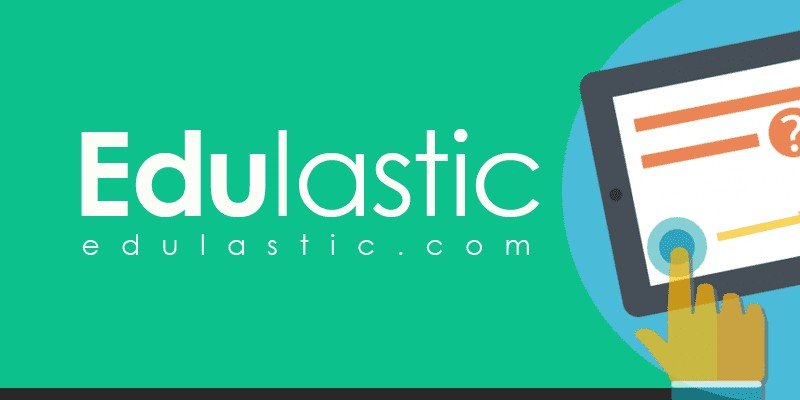Introduction
In the rapidly evolving educational landscape, technology plays a pivotal role in enhancing learning experiences and improving educational outcomes. One such innovative tool that has been gaining traction in classrooms across the globe is Edu. This comprehensive online platform offers educators a range of assessment tools that are designed to align with educational standards, providing insights that can drive student success. In this article, we will explore the various features of Edu, its benefits, and how it can be effectively integrated into teaching practices to maximize its potential.
Understanding Edulastic
it is a digital assessment platform that allows educators to create, administer, and analyze assessments in a variety of formats. Whether you’re looking to create quizzes, tests, or assignments, it offers a user-friendly interface that simplifies the process. The platform is designed to support a range of subjects and grade levels, making it a versatile tool for educators across different educational settings.
Key Features of Edulastic
One of the standout features of it is its ability to create customized assessments that align with state standards and educational benchmarks. Teachers can choose from a wide range of question types, including multiple-choice, short-answer, and open-ended questions, allowing for a more comprehensive evaluation of student understanding.
Another key feature is the real-time data analysis provided by Edu. As students complete assessments, teachers receive immediate feedback on their performance. This data is presented in an easy-to-read dashboard that highlights areas of strength and areas where students may need additional support. This feature enables educators to tailor their instruction to meet the specific needs of their students, ultimately improving educational outcomes.
The Benefits of Using Edulastic
The benefits of using Edulastic extend beyond its robust assessment capabilities. One of the primary advantages is the platform’s ability to save teachers time. By automating the grading process and providing instant feedback, Edulastic allows educators to focus more on instruction and less on administrative tasks. This not only increases efficiency but also enhances the overall teaching and learning experience.
Another significant benefit is the ability to track student progress over time. With Edulastic, educators can monitor how students are performing on specific standards and skills throughout the academic year. This data can be used to identify trends, inform instructional decisions, and provide targeted interventions when necessary.
Furthermore, Edulastic supports differentiated instruction by allowing teachers to create personalized learning paths for their students. By tailoring assessments to meet the individual needs of each student, educators can ensure that all learners are challenged appropriately and can achieve their full potential.
Integrating Edulastic into Your Teaching Practice
Integrating Edulastic into your teaching practice is a straightforward process. The platform is designed to be intuitive, making it easy for educators to get started. Here are some steps to help you effectively integrate Edulastic into your classroom:
- Start Small: Begin by using Edulastic for a few assessments to familiarize yourself with the platform. As you become more comfortable, you can gradually increase the number of assessments you administer through Edulastic.
- Customize Assessments: Take advantage of Edulastic’s customization options to create assessments that align with your curriculum and learning objectives. This will ensure that your assessments are relevant and meaningful to your students.
- Utilize Real-Time Data: Make use of the real-time data provided by Edulastic to inform your instruction. Identify areas where students may be struggling and adjust your teaching strategies accordingly.
- Provide Immediate Feedback: Use Edulastic’s instant feedback feature to provide students with timely feedback on their performance. This will help them understand their strengths and areas for improvement, allowing them to take ownership of their learning.
- Collaborate with Colleagues: Share your experiences with Edulastic with your colleagues and collaborate on best practices. This can lead to more effective use of the platform and better educational outcomes for your students.
Challenges and Solutions
While Edulastic offers numerous benefits, there may be some challenges associated with its use. For example, some educators may find it difficult to navigate the platform initially. However, Edulastic offers a range of resources, including tutorials and support from the Edulastic community, to help educators overcome these challenges.
Another potential challenge is ensuring that all students have access to the necessary technology to complete assessments on it. To address this, educators can consider implementing a blended learning approach, where assessments are completed both online and offline.
Case Studies: Success Stories with Edulastic
Numerous schools and districts have successfully integrated Edulastic into their teaching practices, resulting in improved educational outcomes. For example, a school district in California reported a significant increase in student achievement after implementing Edulastic as part of its assessment strategy. Teachers in the district used the platform to create standards-aligned assessments and track student progress throughout the year. The real-time data provided by Edulastic allowed teachers to identify and address learning gaps early, leading to better student performance on state assessments.
In another case, a middle school in Texas used to support differentiated instruction. Teachers created personalized assessments for students based on their individual needs, which helped to improve engagement and academic achievement. The ability to provide immediate feedback also empowered students to take an active role in their learning, resulting in higher levels of motivation and success.

Future Prospects of Edulastic
As technology continues to evolve, so too will the capabilities of it. The platform is constantly being updated with new features and improvements based on feedback from educators. In the future, we can expect to see even more advanced data analysis tools, enhanced customization options, and greater integration with other educational technologies.
Edulastic is also likely to play a key role in the ongoing shift towards personalized learning. By providing educators with the tools they need to create individualized learning experiences, it will continue to be at the forefront of educational innovation.
Conclusion
Edulastic is a powerful tool that has the potential to transform the way educators assess and support student learning. Its comprehensive features, real-time data analysis, and ability to align with educational standards make it an invaluable resource for teachers looking to improve educational outcomes. By effectively integrating into your teaching practice, you can save time, provide personalized learning experiences, and ultimately help your students achieve their full potential.







